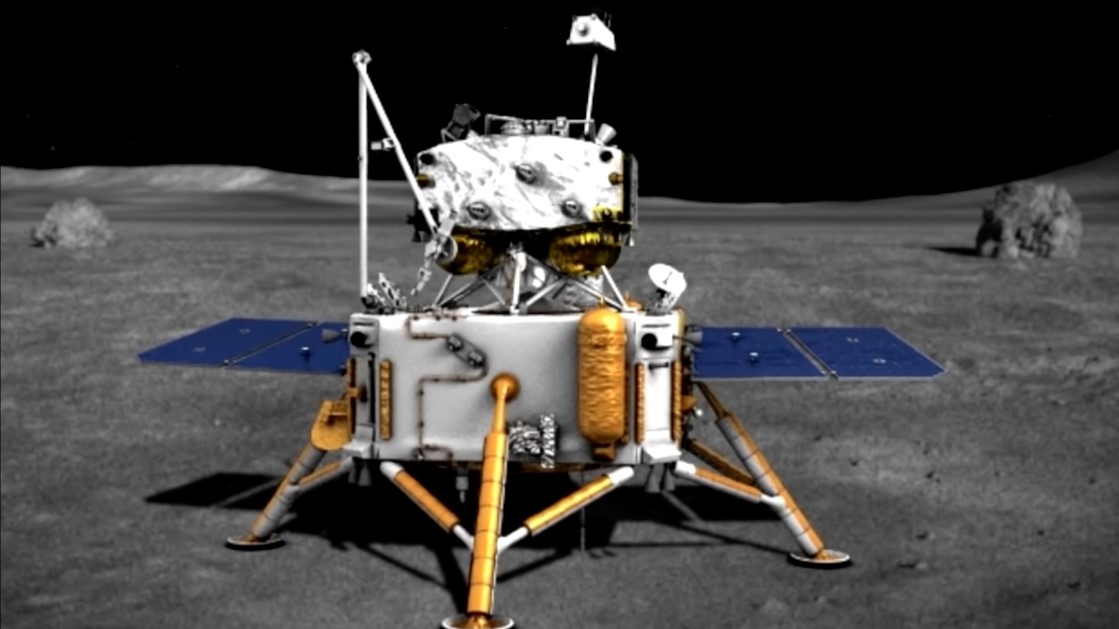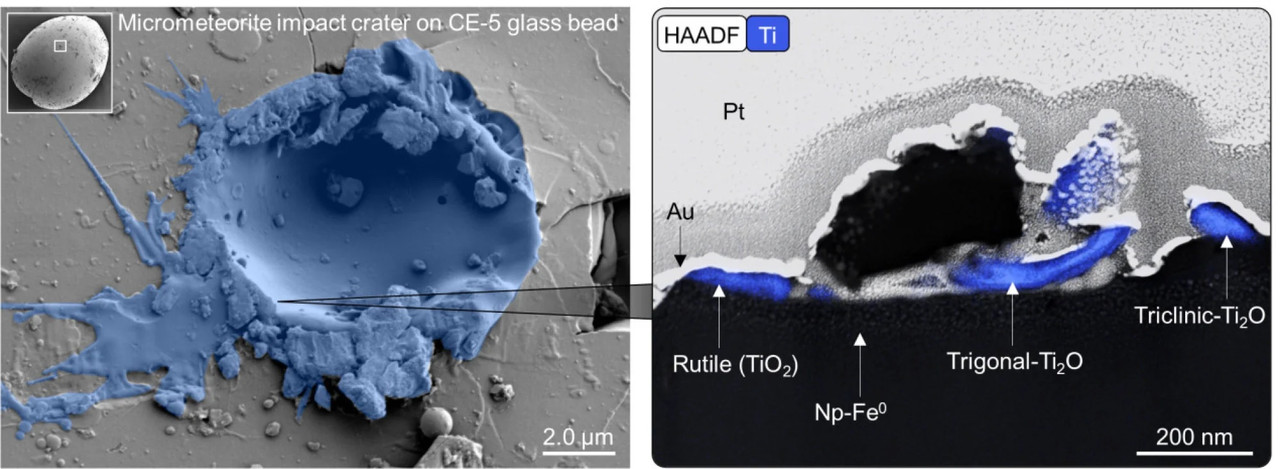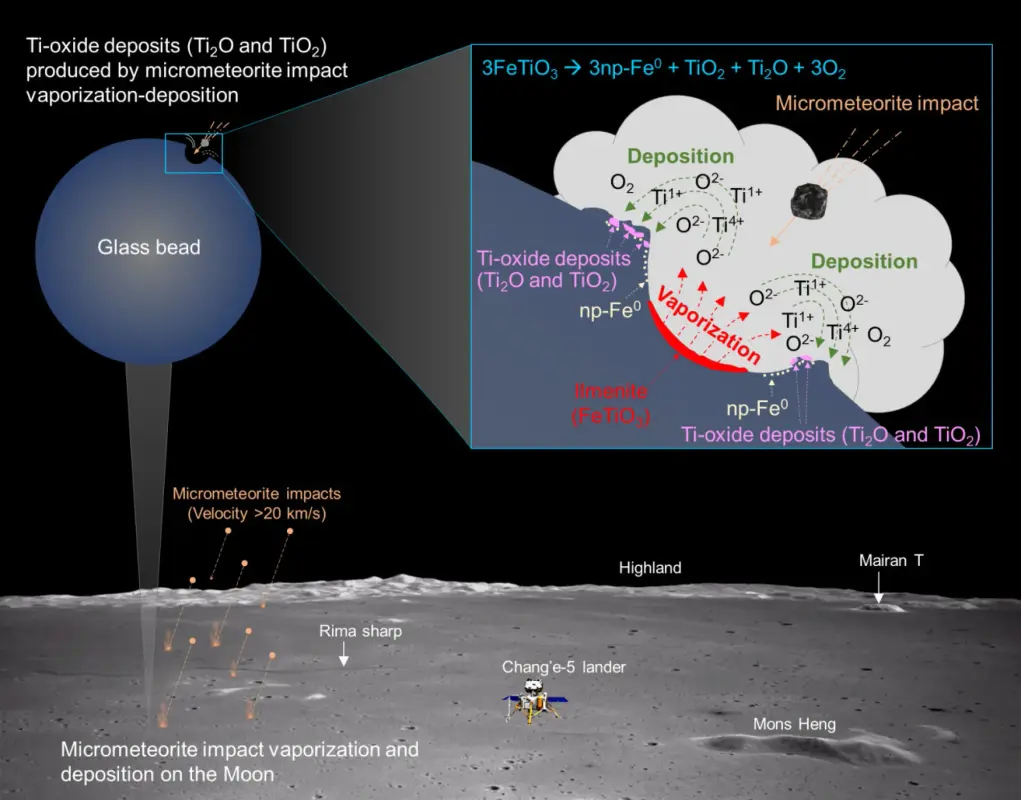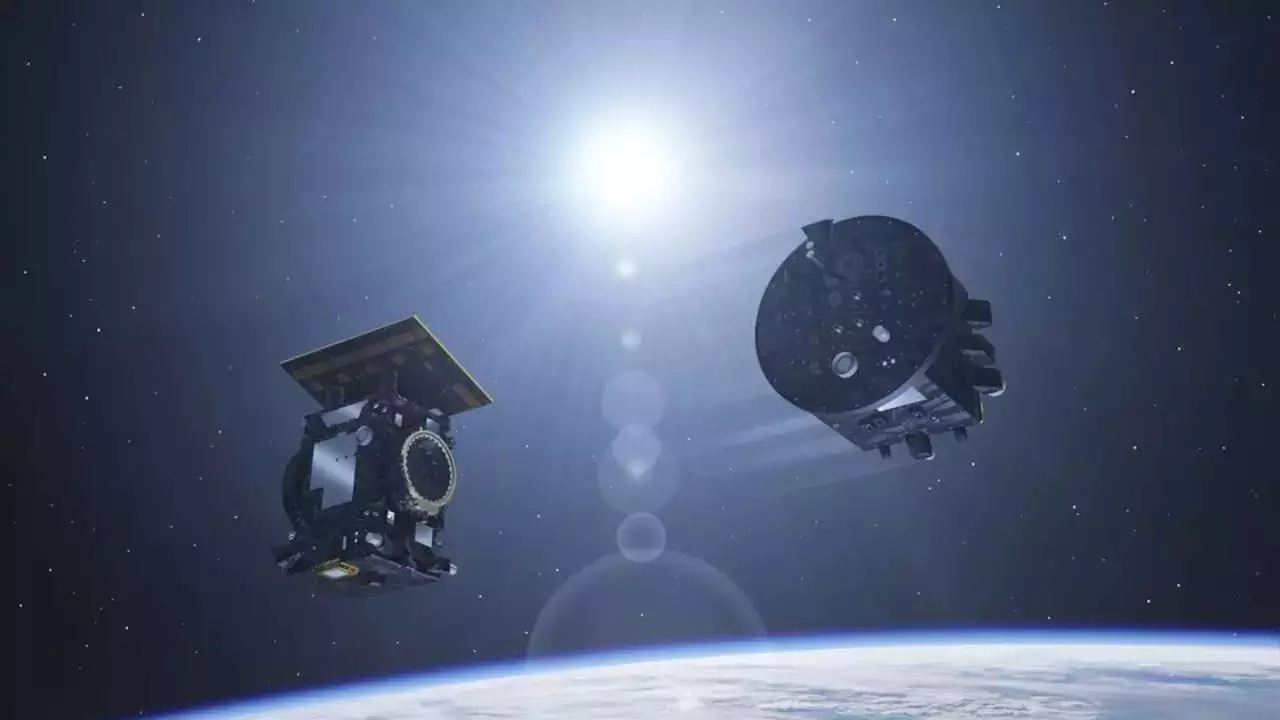Scientists Uncover Lunar Mystery with Discovery of Unique Minerals

Space News
China
A recent study published in the journal Nature Astronomy sheds light on the long-standing mystery of the moon's weathered and cratered surface. Researchers from the Institute of Geochemistry in Guiyang, along with colleagues from Guangzhou and Macau, analyzed lunar soil samples collected by China's Chang’e 5 mission and made a groundbreaking discovery.
The team identified titanium compounds, including Ti2O, which have never been observed in natural samples on Earth. These minerals likely formed due to intense vaporization and deposition processes triggered by the constant bombardment of micrometeorites from space.
Micrometeorite impacts have long been recognized as significant agents in altering the lunar landscape. However, the precise mechanisms behind these transformations have remained elusive until now.

The titanium compounds were found on a 9-micrometer-diameter meteorite impact crater on the surface of a Chang’e 5 glass bead
The discovery of Ti2O, found in two distinct structures on tiny glass beads retrieved by the Chang’e 5 spacecraft, marks a significant milestone. It becomes the seventh and eighth minerals ever discovered on the moon, following previous findings from US Apollo missions, Russian Luna missions, and China's Chang’e 5.
Titanium, a common element on both Earth and the moon, typically exists as an oxide. However, the existence of Ti2O in lunar samples provides valuable insights into the lunar surface's geological processes.

The formation scenario proposed by the Chinese team explains how a micrometeorite impact results in the vaporisation-deposition of Ti-oxide compounds on the lunar surface
By analyzing 25 glass beads from the Chang’e 5 samples, the researchers utilized advanced transmission electron microscopy techniques to examine their composition. They observed a tiny impact crater on one of the beads, where three titanium-containing minerals were detected: rutile (TiO2), trigonal Ti2O, and triclinic Ti2O.
The team proposed that micrometeorites, traveling at high speeds, collided with ilmenite grains on the moon's surface, leading to melting, vaporization, and redeposition of the material onto the impact crater rim. This scenario aligns with predictions made by US planetary scientist Bruce Hapke five decades ago.
The study's findings offer new insights into lunar weathering processes and may have implications for understanding similar phenomena on other airless planetary bodies in the solar system, such as Mercury and asteroids.
The research was supported by various funding programs, including the National Key Research & Development Programme, the Strategic Priority Programme of the Chinese Academy of Sciences, and the National Natural Science Foundation of China.
Overall, this discovery represents a significant step forward in unraveling the mysteries of the moon's geological history, providing valuable clues for future lunar exploration endeavors.


